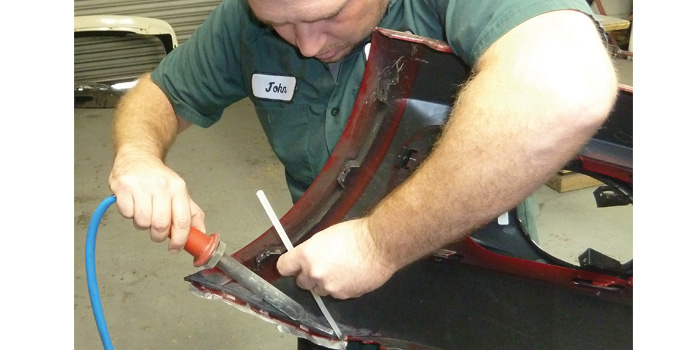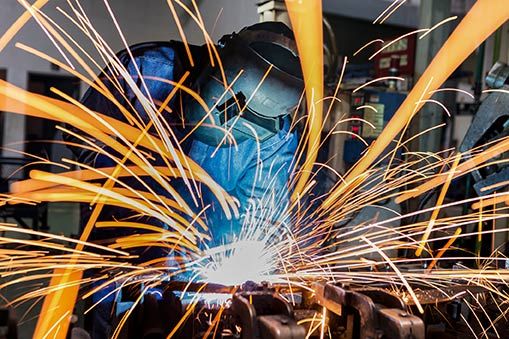Common problems explained and solved by Montana Mobile Welding and Repair Belgrade Fabrication
Wiki Article
Common Welding Fixing Issues and Exactly How to Address Them Efficiently
Welding repairs usually come across a variety of concerns that can jeopardize the integrity of the end product. Typical problems include insufficient infiltration, porosity, and imbalance, among others. Each issue offers distinct obstacles that need certain strategies for resolution. Understanding these issues is essential for welders aiming to enhance their skills and end results. This discussion will explore these typical welding repair concerns and reliable approaches to address them.Insufficient Penetration
Insufficient penetration occurs when the weld metal falls short to completely fuse with the base material, resulting in weak joints and potential structural failings. This concern usually comes from inadequate warm input, incorrect electrode angle, or inappropriate welding rate. Welders may encounter poor infiltration due to a mistake of the required specifications for a particular material density or type. Additionally, contamination on the base product's surface area can impede efficient bonding, aggravating the trouble. To resolve inadequate penetration, welders ought to ensure ideal setups on their devices and preserve a tidy work surface area. Normal assessment of welds is recommended to determine any type of shortages early, enabling for prompt corrections and the avoidance of endangered structural honesty in welded assemblies.Porosity
Porosity is a typical flaw in welded joints that materializes as small gas bubbles entraped within the weld metal. This flaw can endanger the stability of the weld, bring about reduced toughness and potential failing under anxiety. Belgrade. Porosity usually emerges from contamination, wetness, or incorrect welding methods, which enable gases to run away right into the liquified weld pool. To address porosity, welders should assure appropriate surface area preparation, preserve a tidy working setting, and use suitable welding criteria. Furthermore, picking the best filler product and protecting gas can minimize gas entrapment. Routine inspection and testing of welds can aid recognize porosity early, ensuring timely rehabilitative actions are taken, consequently maintaining the high quality and dependability of the bonded structureMisalignment
Misalignment in welding can occur from different factors, including incorrect setup and thermal development. Comprehending the origin is vital for efficient resolution. Numerous correction techniques are available to realign components and guarantee structural honesty.Root causes of Imbalance
Welding misalignment commonly comes from a variety of underlying problems that can jeopardize structural integrity. One main reason is incorrect fit-up of parts prior to welding, which can result in voids and unequal surface areas. Variants in thermal expansion during the welding procedure can likewise lead to distortion, particularly if the materials being joined have various coefficients of development. In addition, inadequate fixturing and securing might fall short to hold elements safely in area, resulting in movement throughout welding. Inadequately maintained tools, consisting of welding makers and devices, may introduce disparities in the weld grain, further adding to imbalance. Operator error, stemming from not enough training or experience, can likewise play a substantial role in creating misaligned welds.
Modification Methods Available
Resolving imbalance effectively calls for a combination of rehabilitative techniques tailored to the specific issues available. One common method is making use of jigs or components to hold parts in the proper setting during welding, ensuring consistent alignment. In addition, pre-heating the products can help in reducing distortion and boost fit-up. For significant imbalance, mechanical realignment methods, such as using hydraulic jacks or clamps, can be employed to correct the position before welding. Post-weld warmth therapy may additionally be needed to ease stresses triggered by imbalance. Finally, cautious inspection and adjustment during the setup phase can prevent misalignment concerns from ending up being considerable troubles, promoting a smoother welding procedure and improving total architectural honesty.Distortion
Distortion is a typical difficulty in welding that can occur from various variables, including irregular heating & cooling. Recognizing the reasons for distortion is crucial for applying efficient prevention methods. Resolving this issue not just enhances structural stability however additionally enhances the overall high quality of the weld.Sources of Distortion
When based on the extreme warmth of welding, products commonly undertake adjustments that can cause distortion. This sensation mainly emerges from thermal growth and contraction during the welding procedure. As the weld location heats up, the product expands; upon air conditioning, it acquires, which can create interior anxieties. In addition, irregular heating across a workpiece can exacerbate these stresses, causing warping or flexing. The kind of material also plays a significant role; metals with varying thermal conductivity and coefficients of expansion may react differently, causing uncertain distortions. Poor joint design and poor fixturing can add to imbalance throughout welding, boosting the chance of distortion. Comprehending these causes is important for efficient welding repair service and avoidance techniques.Avoidance Techniques
Effective avoidance techniques for distortion during welding emphasis on regulating warm input and making certain correct joint style. Maintaining a consistent warmth input assists to minimize thermal development and tightening, which can cause distortion. Utilizing methods such as pre-heating the workpiece can likewise decrease the temperature gradient, promoting uniform heating. Furthermore, selecting suitable joint layouts, such as T-joints or lap joints, can boost stability and minimize stress concentrations. Implementing correct fixturing to safeguard the work surfaces in position further aids in keeping placement throughout the welding procedure. Staggered welding sequences can disperse warm extra evenly, protecting against localized distortion. By using these techniques, welders can greatly lower the possibility of distortion and enhance the total high quality of their welds.Cracking
Cracking is an usual issue experienced in welding repair work, frequently arising from different aspects such as improper cooling prices, material selection, or insufficient joint preparation. The incident of splits can greatly jeopardize the stability of the weld, causing prospective failures throughout procedure. To address this issue, welders must initially analyze the root triggers, making certain that materials work and appropriately selected for the particular application. Furthermore, managing the cooling price during the welding process is essential; Related Site rapid cooling can induce tension and result in breaking. Proper joint layout and preparation additionally add to reducing the risk. Implementing these strategies can improve weld quality and resilience, ultimately minimizing the likelihood of fracturing in ended up weldments.Incomplete Blend
A considerable problem in welding fixings is insufficient fusion, which happens when the weld metal does not sufficiently bond with the base product or previous weld passes - Montana Mobile Welding and Repair Fabrication. This problem can cause weak points in the joint, potentially jeopardizing the honesty of the bonded framework. Factors contributing to incomplete combination consist of not enough heat input, improper welding strategy, and contamination of the surfaces being signed up with. To address this issue efficiently, welders ought to guarantee appropriate pre-weld cleaning and surface area prep work, as well as change their welding specifications to attain appropriate infiltration and blend. Normal assessment during the welding process can also assist determine insufficient blend early, permitting for timely restorative measures to enhance the general top quality of the weldOverheating
While welding fixings can improve architectural honesty, overheating presents a substantial challenge that can cause material destruction. Too much warmth during welding can modify the mechanical properties of metals, leading to decreased toughness, raised brittleness, and bending. This sensation is specifically essential in high-stress applications where architectural reliability is extremely important. Determining getting too hot can entail visual examinations for discoloration or distortion, along with keeping track of temperature level during the welding procedure. To minimize the dangers related to getting too hot, welders must employ proper techniques, such as regulating warm input, changing travel speed, and utilizing suitable filler products. In addition, implementing pre- and post-weld warm treatments can assist restore product residential properties and improve the general top quality of the repair work, making sure long-term efficiency and safety.Frequently Asked Questions
What Are the Usual Indications of a Welding Flaw?
see this website
Just How Can I Examine My Welds for Top quality?
To examine welds for high quality, one can make use of visual inspections, ultrasonic testing, and radiographic approaches. Each technique ensures architectural stability, determines issues, and validates adherence to specified standards, eventually enhancing the reliability of the bonded joints.What Security Preventative Measures Should I Take While Welding?
When welding, one must prioritize security by wearing appropriate individual safety equipment, guaranteeing correct air flow, protecting flammable materials away, preserving a clean work area, and knowing environments to avoid injuries and accidents.Can I Repair a Weld Without Remodeling the Entire Joint?
Fixing a weld without redoing the whole joint is feasible, depending on the damages (Fabrication). Strategies such as grinding, adding filler material, or making use of a welding procedure can successfully attend to particular defects while preserving the surrounding frameworkWhat Tools Are Important for Efficient Welding Repairs?
Crucial tools for reliable welding repairs click over here include a welding equipment, wire brush, mill, safety equipment, clamps, and filler products. Each device plays an important duty in guaranteeing high quality and safety during the repair process. Porosity commonly emerges from contamination, wetness, or improper welding techniques, which enable gases to get away right into the molten weld swimming pool. Badly conserved tools, including welding equipments and tools, may introduce disparities in the weld grain, more contributing to imbalance. When subjected to the extreme heat of welding, products often undertake changes that can lead to distortion. Fracturing is an usual concern experienced in welding repair work, often resulting from numerous variables such as incorrect cooling rates, material choice, or inadequate joint preparation. A considerable problem in welding repairs is incomplete blend, which happens when the weld steel does not adequately bond with the base material or previous weld passes.Report this wiki page